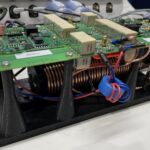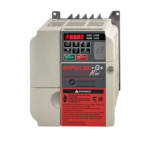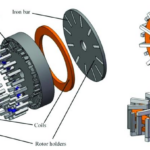By Brent McDonald, Texas Instruments Modern electronic systems need small, lightweight, high-efficiency power supplies. These supplies require cost-effective methods to take power from the AC power distribution grid and convert it to a form that can run the necessary electronics. High switching frequencies are among the most significant enablers for small size. To that end, […]
Featured
PSMA launches “Global Energy Efficiency Awards” to recognize impactful innovations on Earth Day 2024
To highlight the critical impact of improvements in energy efficiency on reducing global climate change, the Power Sources Manufacturers Association (PSMA) has chosen today – Earth Day 2024 – to announce the call for nominations for its “Global Energy Efficiency Awards.” Nominations will be accepted from April 22 until Sept. 3, 2024. PSMA, co-sponsor of […]
How to quantify pulse current capability of SiC FETs
Silicon Carbide FETs go beyond silicon to extend reach to high pulse currents in power conversion applications. Wide bandgap (WBG) semiconductor devices, such as Silicon Carbide (SiC) field-effect transistors (FETs), are renowned for their minimal static and dynamic losses. Beyond these attributes, this technology can endure high pulse currents, proving particularly advantageous in applications like […]
Zonal automotive power distribution can dramatically improve efficiency, weight, and cost: part 3
If something can’t go on, it won’t; supplying the automobile’s voracious electrical demands from a 12-V battery is an example of this reality. If you haven’t already, check out Part 1 and Part 2 of this discussion. Under the zonal architecture, many legacy loads will still be supported by a 12-V battery or its functional […]
APEC 2024: Semiconductors, modules, transformers, and chargers
Power supplies from phone chargers to EVs to industrial machinery rely on semiconductors, either in discrete packages or integrated into power modules, to deliver power. APEC 2024 was full of power sources and components. The roundup below highlights regulators, switches, and power semiconductors. We also highlight wireless power delivery and chargers. Be sure to see […]
Zonal automotive power distribution can dramatically improve efficiency, weight, and cost: part 2
If something can’t go on, it won’t; supplying the automobile’s voracious electrical demands from a 12-V battery is an example of this reality. Topology changes affect the battery source Due to the 12-V issues, many newer ICE vehicles and nearly all EV/HEVs also have a 48-V battery. This battery serves loads that are more efficiently […]
Zonal automotive power distribution can dramatically improve efficiency, weight, and cost: part 1
If something can’t go on, it won’t; supplying the automobile’s voracious electrical demands from a 12-V battery is an example of this reality. Today’s cars — whether based on the traditional internal combustion engine (ICE), some form of hybrid electric vehicle (HEV), or even a pure electric vehicle (EV) — are loaded with electronics, sensors, […]
APEC 2024: Power to the data center
Data centers power the world, or does the world power data centers? According to one report, datacenters currently consume 2% of the world’s electricity and that could increase to 8% by 2030. Much of that electricity arrives at the load as low voltage, high current. For example, a single IC, processor, graphics processor, AI chip, […]
FAQ on axial flux motors: part 3
Radial flux AC motors offer some performance and packaging benefits but also bring some thermal and manufacturability issues. Part 1 of this series examined the axial-flux motor (AFM) in detail and compared it to the very widely used radial-flux motor (RFM). Part 2 of this FAQ continued the exploration of AFMs and RFMs. This final part […]
FAQ on axial flux motors: part 2
Radial flux AC motors offer some performance and packaging benefits but also bring some thermal and manufacturability issues. This part of the FAQ continues the exploration of AFMs and RFMs. The first part examined the axial-flux motor (AFM) in more detail and compared it to the very widely used radial-flux motor (RFM). The final part […]











